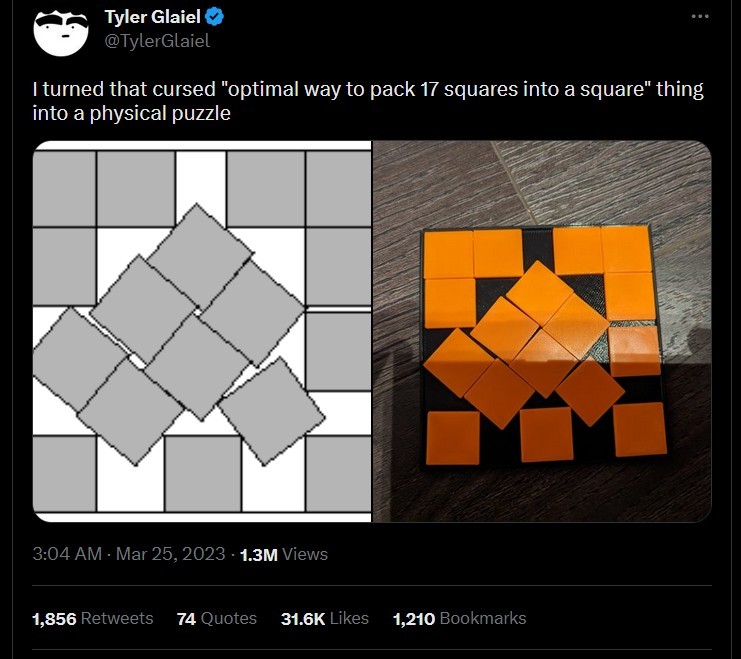views

This Twitter post by Tyler Glaiel (@TylerGlaiel) highlights his fascinating venture into recreational mathematics and puzzle design. The tweet reads: "I turned that cursed 'optimal way to pack 17 squares into a square' thing into a physical puzzle."
The core of the post revolves around the "optimal way to pack 17 squares into a square" problem, which is a specific instance of a broader class of mathematical packing problems. These problems, often surprisingly complex, involve finding the most efficient way to fit smaller shapes into a larger one, minimizing wasted space. The case of 17 squares into a square is known to be particularly challenging and has been a subject of interest in recreational mathematics and computational geometry.
The image provided offers a side-by-side comparison:
- Left panel: A grayscale diagram illustrating the theoretical, optimal arrangement of 17 squares within a larger square. This diagram typically represents a known solution to the packing problem, showcasing how the squares are angled and positioned to minimize the bounding square's size.
- Right panel: A photograph of the physical puzzle created by Tyler Glaiel. This tangible version brings the abstract mathematical problem to life, with orange 3D-printed square pieces arranged on a black base, mirroring the complex configuration seen in the diagram.
This creation is appealing to both puzzle enthusiasts and those with an interest in mathematics. It demonstrates how complex theoretical problems can be translated into interactive, hands-on challenges. The term "cursed" in the tweet humorously acknowledges the difficulty and often frustrating nature of finding such optimal packing solutions, making the physical realization of it even more intriguing. It's a testament to the intersection of mathematics, design, and problem-solving.




















Comments
0 comment